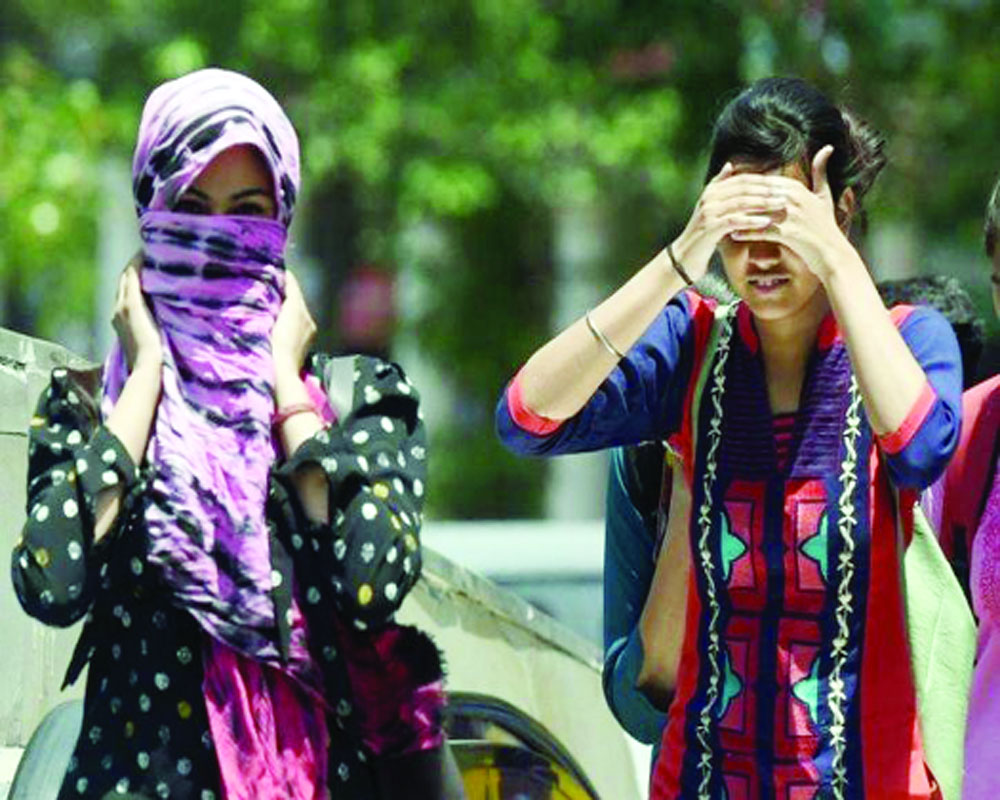Heat waves are not uncommon but increasingly, they are being attributed to global warming and climate change. The world lost more than five lakh people to such events in the last 20 years along with an economic loss of $3.47 trillion
As early as December 2018, it was predicted that the summer of 2019 would deliver punishing heat wave conditions and going by the spiralling temperatures currently being experienced across the country, the prophecy seems to be coming true. The national capital Delhi was left scalded as it experienced temperatures touching 48 degree centigrade as recently as June 10 — the hottest June day for the capital ever. Dholpur in nearby Rajasthan was worse at 51°C. It was the fourth time that the temperature crossed 50°C in June in the State, according to Indian Meteorological Department (IMD).
A combined effect of climate change and an evolving El-Nino is transforming this year to be the hottest ever and the trend is not gladdening. Four of the warmest years ever recorded were the last four years. The year 2018 started off with a moderate La-Nina phenomenon, which generally has a cooling effect on global climate, but is going to end up being the fourth warmest year after 2015, 2016 and 2017.
This clearly shows a warming trend. In fact, the 20 warmest years on record have occurred in the last 22 years. This trend also sits in perfectly with the emission rates of Green House Gases (GHGs) which were at a record high by end of 2018, according to the World Meteorological Organisation. Scientists at Pennsylvania State University in the US have also confirmed that a combination of human-caused warming and a natural upswing in temperatures increase the odds that any new El-Nino year would turn out to be the warmest ever.
Additionally, many weather forecasters around the world, including the IMD, had predicted that the development of an El-Nino phenomenon by the end of 2018 would make things unbearably hot in 2019. This pattern has already taken over. It is evident in the form of abnormally hot winter seasons for the past three to four years in a row. Continuing at this rate, the next year will be even worse and the threat to health and well-being, especially of the young and the elderly, will be devastating.
The development of these events has been evident since the later half of the last year. On November 22, 2018, the IMD observed that moderate El-Nino Southern Oscillation conditions were prevalent in the equatorial Pacific Ocean region and the El-Nino is likely to develop in the next two months.
El Nino, which is the unusual warming of the equatorial Pacific Ocean, further adds to the already warming temperatures. Following on this, on December 3, 2018, the IMD again stated that equatorial Sea Surface Temperatures (SSTs) were above average across most of the Pacific Ocean.
The climate prediction centre at the National Oceanic and Atmospheric Administration (NOAA) says that there is an 80 per cent chance that a full-fledged El-Nino has already begun and will last till the end of February 2019. The impact of El-Nino on global weather has also got more intense on the past few occasions as a result of climate change, according to a research paper published in the journal Geophysical Research Letters. Another major indicator of the warming trend due to climate change is Ocean Heat Content (OHC). The year 2018 recorded a new high in terms of OHC since observations began in 1940.
There is more heat stored in the Earth’s oceans today than at any time in the last 78 years. When GHGs trap heat in the atmosphere, some of it gets converted into surface temperature but 90 per cent of it gets assimilated into the oceans. Therefore, OHC is a much better indicator of climate change than surface temperatures. The last El-Nino event that ended in 2016 had lasted for two years and caused heat waves all around the world, including India. The heat waves in 2015 and 2016 killed more than 2,500 people in India and have been attributed to climate change, which suggests that El-Nino was intensified by global warming.
Heat waves are not uncommon but increasingly, these extreme weather conditions are being attributed to global warming and climate change. The heat waves of 2015 and 2016 especially have been attributed to global warming, particularly considering a combination of temperature and humidity. The severe El-Nino conditions are also causing massive coral bleaching in the Great Barrier Reef and droughts in parts of Africa, South East Asia and South America. Australia, too, is witnessing its worst drought in living memory. In regions like the New South Wales, the drought is the worst in 400 years. One of the impacts of warmer surface temperatures and more ocean heat will be greater occurrence of extreme weather events such as tropical cyclones, heat waves, floods and droughts. In 2018, there were 70 tropical cyclones all over the world, while the long-term average was 53.
The world lost more than five lakh people to such events in the last 20 years along with an economic loss of $3.47 trillion, according to the latest Global climate risk index 2019 report. The year 2019 seems to be having more than its share of extreme weather events in the first three months. One can only hope for the best for the rest of the year.
(The writer is an environmental journalist)


























